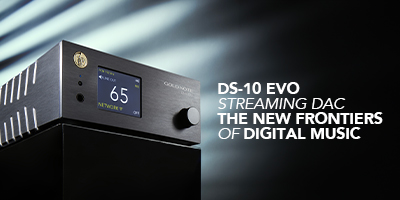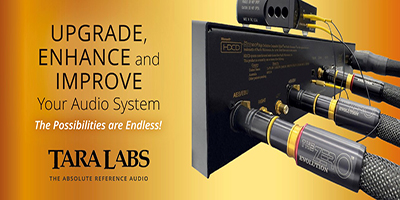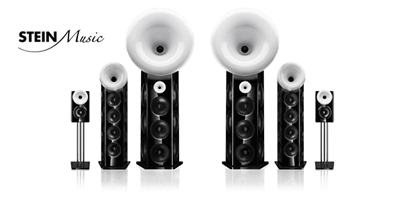Now let’s take a look at the moving magnet phono stage side of the M6 & M8 RIAA.
Above: M6 (left), M8 (right).
In the photo below, you can see the M6's moving magnet phono stage on the left, the line stage in the middle, and the output transformers on the right.
Both the phono and line stage are powered by their own dedicated 6X5 valve rectified power supplies based on the M10 Galahad PSU, as described earlier.
Above: M6 phono stage side of the chassis. Phono stage (left), line stage (middle), and output transformers (right).
In the M6's phono stage (below), you can see 3 x GE JAN 5670W/2C51W valves in V6-8, Audio Note (UK) copper foil signal capacitors, tantalum one-watt resistors, and a Kaisei electrolytic capacitor on the phono stage circuit board.
Above: M6 phono stage close-up.
In the M6's line stage (below), you can see the NOS GE 7044 for V2, the Kaisei electrolytic capacitors, and one-watt tantalum resistors.
Above: M6 line stage.
Below you can see the M6's in-house designed and manufactured, custom Audio Note (UK) output transformers which feature UHiB double c-cores, copper windings for the primaries, and silver windings for the secondaries.
Above: M6 copper-silver output transformers.
In the photo below, you can see the M8's moving magnet phono stage on the left, the line stage in the middle, and the output transformers on the right.
Both the phono and line stage are powered by their own dedicated 6X5 valve rectified power supplies based on the M10 Galahad PSU, as described earlier.
Above: M8 phono stage side of the chassis.
In the M8's phono stage (below), you can see 3 x GE JAN 5670W/2C51W valves in V6-8, Audio Note (UK) silver foil signal capacitors, tantalum two-watt resistors, and Kaisei electrolytic capacitors on the phono stage circuit board.
Above: M8 phono stage.
In the M8's line stage (below), you can see the NOS Telefunken 6463 for V2, the Black Gate electrolytic capacitors (red), and the two-watt tantalum resistors.
Above: M8 line stage.
In the photo below are the M8's in-house designed and manufactured, custom Audio Note (UK) output transformers with HiB 50% Nickel double c-cores, and silver windings for both the primaries and for the secondaries.
Above: M8 silver output transformers.
While the M6 and M8 RIAA phono preamplifiers look the same on the outside and share the same circuit topology, zero negative feedback, single-ended circuit topology, and valve rectification, there are some notable circuit component performance upgrades when going from the Level Four M6 RIAA to the Level Five M8 RIAA.
To summarize the differences:
Level Four M6 RIAA
- Vacuum tubes - V2 is a NOS GE 7044, and 2 x NOS RCA ECL82/6BM8 valves in V4 and V10 for voltage regulation.
- Audio Note (UK) copper wiring.
- Audio Note (UK) one-watt tantalum resistors.
- Audio Note (UK) copper foil signal capacitors.
- Audio Note (UK) output transformers which feature UHiB double c-cores, copper windings for the primaries, and silver windings for the secondaries.
Level Five M8 RIAA
- Vacuum tubes - V2 is a NOS Telefunken 6463, and 2 x NOS Siemens ECL82/6BM8 valves (made in Germany) in V4 and V10 for voltage regulation.
- Audio Note (UK) silver wiring.
- Audio Note (UK) two-watt tantalum resistors.
- Audio Note (UK) silver foil signal capacitors.
- Audio Note (UK) output transformers which feature HiB 50% nickel double c-cores, silver windings for both the primaries and for the secondaries.
I hope the photographic "walk-through" of the M6 and M8 RIAA phono preamplifiers helped give you a sense of the changes that were made in going from the Level Four M6 RIAA to the Level Five M8 RIAA.
Please click on the link below to go to the next page.




































